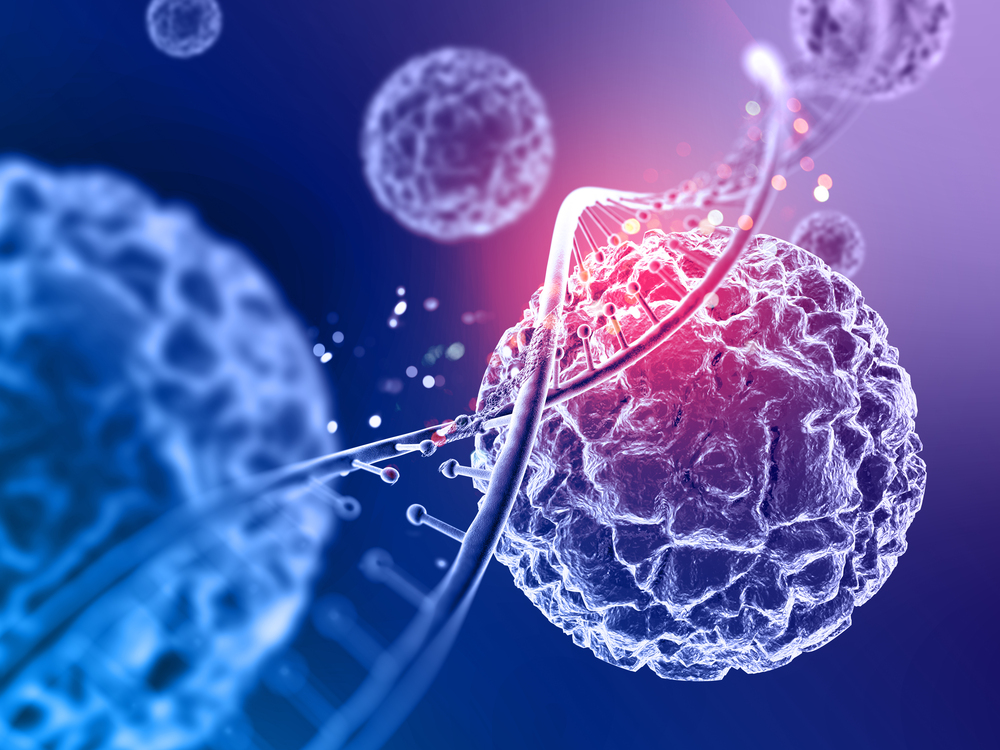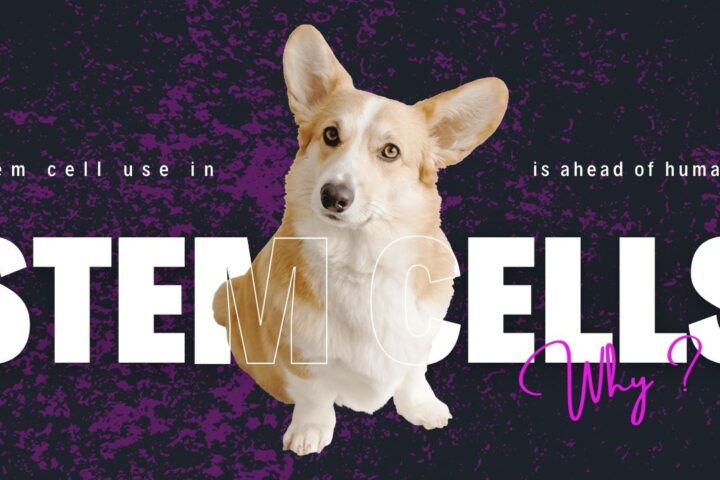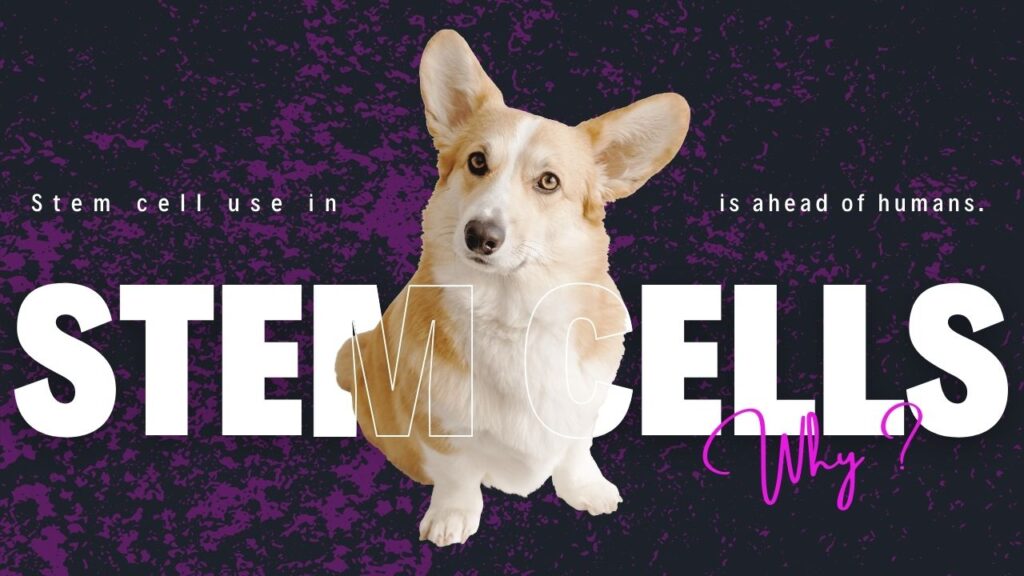I have heard about stem cell therapy for quite some time. Many countries, such as the U.S. and Korea, have banned this kind of therapy, while others, like Thailand and Mexico, have no legal restrictions. In Thailand, a public company named Medeze Group Public Limited went public two years ago on the Thai stock market. Mexico also has a well-known stem cell therapy company backed by celebrities like Tiger Woods and Justin Timberlake. In 2024, a successful businessman turned health influencer, Bryan Johnson, visited this clinic for treatment.
Despite the controversy surrounding stem cell therapy, many people are eager to explore it as a wellness option. I don’t know much about the stem cell business in Mexico, but I currently live in Phuket, where the government and local businesses aim to transform the province into a world-class wellness destination. I have noticed numerous clinics offering these services, supported by significant investments at both local and international levels. However, these businesses often face challenges in communicating freely due to the gray area of Thai laws regarding stem cell therapy.
Currently, there is a lack of credible research on the results of stem cell therapy. Therefore, I would like to reiterate some basic information about stem cells, which may be useful for those considering this expensive treatment.
Stem cells have two fascinating properties:
- Self-renewal: They can continuously regenerate themselves.
- Differentiation: Certain types of stem cells can transform into other cell types.
The most intriguing category is the one that possesses both of these properties, which businesses often highlight to attract clients. Let’s dive deeper into this topic.
There are four main types of stem cells:
-
Totipotent: This type can transform into any cell type in the body. A common example is the fertilization of an egg by sperm, which produces a totipotent zygote.
-
Pluripotent: These cells can regenerate into their own type. A significant breakthrough was made by Japanese researcher Shinya Yamanaka, who won the Nobel Prize in 2006 for his work on transforming human cells (such as skin or eye cells) into stem cells using a set of factors known as the Yamada factors (Oct4, Sox2, Klf4, and c-Myc). This early form of stem cell is called Induced Pluripotent Stem Cells (iPSCs). While promising for therapy, iPSCs have been linked to tumor formation, leading to their limited use.
-
Multipotent: These stem cells can differentiate into multiple types of cells, but not as broadly as totipotent cells. They are commonly used in treatments for anti-aging and diseases like Alzheimer’s. Two notable types are Hematopoietic Stem Cells (HSCs), used in bone marrow transplantation, and Mesenchymal Stem Cells (MSCs), also known as Mesenchymal Stromal Cells or medicinal signaling cells. The latter is currently promoted by many businesses.
-
Unipotent: These stem cells can differentiate into only one specific cell type and cannot transform into other types.
-
Telomere Shortening: Culturing stem cells over time leads to telomere shortening. Each time a stem cell divides, its telomeres—the protective caps at the ends of chromosomes—become shorter. In laboratory settings, where stem cells are repeatedly induced to divide, this process accelerates. Eventually, shortened telomeres cause stem cells to lose their ability to divide and regenerate, leading to cellular senescence or death. Researchers are exploring methods to extend telomere length or limit cell divisions during culturing to preserve the cells’ regenerative potential.
-
Impact of Free Radicals: Free radicals (reactive oxygen species, or ROS) can accelerate the aging of stem cells. These highly reactive molecules can damage cells by attacking DNA, proteins, and lipids. Excessive exposure to free radicals leads to:
- DNA Damage: Free radicals can break or alter the DNA in stem cells, resulting in mutations and impaired function.
- Mitochondrial Dysfunction: Free radicals can damage mitochondria—the energy-producing structures in cells—reducing stem cell vitality and increasing aging.
- Induction of Senescence: High levels of oxidative stress can push stem cells into a state of senescence, where they lose their ability to divide and regenerate.
- Telomere Shortening: Free radicals also contribute to further telomere shortening, exacerbating stem cell aging.
This oxidative damage reduces the regenerative capacity of stem cells, impairing tissue repair and contributing to the aging process.
-
Mutations: During the culturing phase, if stem cells receive inappropriate nutrients, there is a risk of DNA mutations, known as genetic instability. These mutations can originate from the stem cells themselves or from external processes affecting gene expression, referred to as epigenetics.
-
Cell Quantity: A key factor is the sheer number of cells used in bone marrow transplantation, typically around 2-5 million cells per kilogram of body weight. For instance, a person weighing 100 kg would need approximately 200 million cells (100 x 2,000,000). In contrast, many hospitals and clinics offering stem cell therapies use significantly fewer cells—only around 1-10 million—making a substantial difference in efficacy.
-
Transplantation Process: Bone marrow transplantation involves more than just taking bone marrow from a donor and placing it in the patient’s body. Instead, the stem cells are injected into the bloodstream, where they rely on the body’s natural self-regulation system, known as the “homing mechanism.” This system involves two key elements: SDF-1 and CXCR4, which guide the stem cells to the bone marrow, ensuring they go where they are needed.
-
Bone Niche: Once the stem cells reach the bone marrow, they encounter specific signals known as paracrine factors, which create a specialized environment called the Bone Niche. This niche plays a vital role in keeping the stem cells quiescent (inactive) until they are needed for regeneration. It ensures that the stem cells remain healthy and effective for their intended purpose.
-
Cell Quantity: The number of stem cells injected is often insufficient compared to what is required for effective treatment.
-
Migration and Localization: Stem cells tend to migrate to the lungs and liver instead of reaching the target area, resulting in reduced effectiveness.
-
Lack of Homing Mechanism: Injected stem cells lack the signals and supportive microenvironment to direct them to the desired location in the body.
-
Immune Response: The body may mount an immune response against the foreign stem cells, leading to inflammation and potential rejection.
-
Unclear Differentiation Signals: We still do not know what specific conditions or factors are needed to stimulate the injected stem cells to differentiate into the desired cell types.
-
Potential for Mosaicism: Injected stem cells from another person can lead to mosaicism, which may result in unintended physical changes and immune complications.
-
Compatibility: Donors are carefully matched to recipients, minimizing the risk of rejection due to immune response.
-
Controlled Environment: The bone marrow provides a supportive niche that facilitates stem cell function and integration.
Challenges of Using Mesenchymal Stem Cells (MSCs)
Mesenchymal Stem Cells (MSCs) can be sourced from various tissues, including fat, amniotic fluid, and placenta. Most hospitals and clinics typically use placental MSCs due to their lower likelihood of rejection, as they resemble newly formed cells. If the body rejects injected stem cells, they become ineffective, rendering the treatment useless.
What Happens to Stem Cells Before Injection?
Before injecting stem cells into the body, several processes take place. One significant concern is the potential for these stem cells to carry infections. Additionally, improper culturing can lead to the aging of mesenchymal stem cells (MSCs), a phenomenon known as MSC senescence. When these stem cells age, their capabilities decline. This is particularly important for anti-aging therapies, as diminished functionality means the stem cells may not provide the intended benefits.
It’s also vital to note that aging stem cells do not simply die; they secrete substances that can induce inflammation. This inflammatory response can further complicate their effectiveness and safety in therapeutic applications.
The Stem Cell Culturing Process
Once stem cells are collected, they must be cultured to increase their numbers, as the initial quantity from the source is often minimal. This culturing process is complex and requires specific nutrients at each stage of development.
To illustrate, think of stem cells like humans: when we are young, we primarily consume milk, but as we age, our diet diversifies to include bread, fruit, and other foods. Currently, scientific knowledge does not fully define the exact nutrients necessary for optimal stem cell culturing at each stage. If the stem cells are provided with improper nutrients or incorrect amounts, they may become abnormal, which can compromise their therapeutic potential.
Why Do Stem Cells Age?
Key Considerations Before Undergoing Stem Cell Therapy
Before deciding on stem cell therapy, it’s essential to understand the nature of Mesenchymal Stem Cells (MSCs), which can differentiate into various cell types, including fat cells, bone cells, cartilage cells, muscle cells, and collagen-producing cells. However, the crucial point to note is that we cannot predict with certainty what these stem cells will become.
The environment surrounding the injected stem cells significantly influences their differentiation. For instance, if stem cells are injected into the face with the goal of achieving a youthful appearance, we hope they will transform into fat cells or collagen-producing cells. However, there is a risk they could instead differentiate into cartilage, fibrous tissue, or even tumors.
While the likelihood of such adverse outcomes is low, the possibility remains, highlighting the need for thorough research and adherence to safety protocols when considering stem cell therapies.
Some clinics now advertise the use of MSCs instead of Induced Pluripotent Stem Cells (iPSCs), which were associated with the risk of teratoma tumors. A teratoma is a rare germ cell tumor that may contain various types of tissues, such as teeth, hair, bone, and muscle. Although most teratomas are benign, they can be malignant.
However, the switch from iPSCs to MSCs does not eliminate the risk of adverse effects. MSCs can still yield unpredictable outcomes, including differentiation into unintended cell types, which may lead to complications. Therefore, careful consideration and comprehensive research are vital to understanding the potential risks associated with stem cell therapies.
Why Bone Marrow Transplantation Works While Other Stem Cell Therapies Are Unproven
Using stem cells to treat conditions like osteoarthritis and diabetes has not yet been conclusively proven effective. However, bone marrow transplantation, which also involves stem cells, has shown success. Why is that?
First, bone marrow transplantation follows a specific set of procedures that contribute to its effectiveness:
These carefully orchestrated processes—large cell quantities, precise guidance mechanisms, and supportive environments—are what make bone marrow transplantation effective. By contrast, stem cell therapies for other conditions may lack the same level of precision, understanding, or supportive mechanisms, which is why their outcomes are not as reliable or well-proven.
Why Injecting Stem Cells into the Bloodstream May Be Ineffective
Injecting stem cells into the bloodstream for conditions like osteoarthritis or heart issues may be ineffective due to the First Pass Effect. When stem cells are injected into a peripheral vein, they first pass through the lungs and liver, where many cells can become trapped. This limits their ability to reach target areas like the heart or brain, thereby reducing their therapeutic potential. In essence, the journey to critical locations is hindered, affecting the overall effectiveness of the treatment.
The Misconception of Stem Cells Repairing Dead Brain Cells
There’s a common misconception that injecting stem cells can automatically repair dead brain cells. In reality, most injected stem cells end up in the lungs. For instance, when hospitals or clinics offer stem cell therapies with only 1-10 million cells, it raises the question: how can this quantity effectively target the heart or brain?
To put this in perspective, bone marrow transplantation requires approximately 2-5 million cells per kilogram of body weight. If a hospital provides just 1 million cells, it would only be sufficient for someone weighing about 0.5 kilograms. This stark contrast underscores the disparity in the number of cells needed for effective therapy compared to what is typically administered in stem cell treatments.
The Reality of Injecting Stem Cells into the Face
When it comes to injecting stem cells into the face, a crucial question arises: do we have an environment akin to the Bone Niche? The answer is no. The stem cells injected into the face lack the supportive environment and guidance that they experience in the bone marrow.
In the bone marrow, specific homing signals, such as SDF-1 and CXCR4, direct stem cells to their intended location. In contrast, injected stem cells in the face do not have these mechanisms to guide them. It’s not like navigating through a maze where they can find their way. Without the appropriate cues and microenvironment, there is no guarantee that the stem cells will settle in the desired area or differentiate into the specific cell types needed for rejuvenation or repair. This underscores the unpredictability and limitations of stem cell therapies in cosmetic applications.
Why Do Hospitals Recommend Regular Stem Cell Injections?
Hospitals that sell stem cell therapies often recommend receiving injections once or twice a year. But why is there a need for repeated treatments? Unlike patients undergoing bone marrow transplants, who typically do not require follow-up injections, patients receiving other forms of stem cell therapy often find themselves needing more.
The primary reason is that we currently lack the technology to keep stem cells localized in the target area. In the bone marrow, stem cells benefit from a specific niche that allows them to thrive and remain in place. In contrast, when stem cells are injected into other areas of the body, they may disperse or fail to settle in the intended location. This lack of supportive conditions can diminish their therapeutic effects over time, necessitating repeated injections to achieve and maintain the desired outcomes.
The Fate of Dispersed Stem Cells
Stem cells that do not remain localized after injection often end up dying. When injected into the body, these cells frequently lack the necessary signals and supportive microenvironment to stay in the targeted area. As they disperse, many may not survive due to a deficiency in oxygen, nutrients, or appropriate cell-to-cell interactions.
Without a suitable environment to support their function and viability, these migrating stem cells may undergo apoptosis (programmed cell death) or senescence (aging). This diminishes their potential for providing therapeutic benefits, highlighting the challenges of achieving effective outcomes with current stem cell therapies.
Challenges of Localizing Stem Cells from Donors
Even with technology that could keep stem cells localized to desired organs, significant issues would persist. One major concern is Mosaicism, which arises when stem cells from a donor (allogeneic stem cells) are introduced into a recipient’s body. Our immune system distinguishes between our own cells and foreign cells, a classification that can have serious health implications.
For instance, if an individual with tanned skin receives stem cells from a donor with fair skin, and these stem cells localize to the face, the resulting skin tone in that area could reflect the donor’s characteristics, resulting in a lighter complexion. This potential for mismatched traits underscores the complexities of using allogeneic stem cells, as it may lead to undesirable aesthetic changes and trigger immune responses.
Thus, the use of donor-derived stem cells presents challenges that go beyond mere localization, necessitating careful consideration of both biological and cosmetic outcomes.
Potential Rejection of “Young” Stem Cells
Even when using “young” stem cells, which generally have a lower likelihood of provoking an immune response, the risk of rejection remains. If the body does mount a rejection response, the treatment could be rendered ineffective.
Rejection of foreign substances typically leads to inflammation, but the specific outcomes of such inflammatory responses related to injected stem cells are not yet well understood. This gap in knowledge emphasizes the necessity for further research to clarify how immune reactions can impact the efficacy and safety of stem cell therapies. Understanding these dynamics is crucial for advancing the clinical application of stem cells and optimizing therapeutic outcomes.
Uncertainty in Differentiation of Injected Stem Cells
It’s important to recognize that we still lack clarity on the specific factors or conditions necessary to stimulate injected stem cells to differentiate into the desired cell types. This uncertainty adds a significant layer of complexity to stem cell therapies. Without the right signals or supportive environment, the injected stem cells may not transform as intended, ultimately limiting their therapeutic potential.
This unpredictability underscores the need for ongoing research to better understand the mechanisms that govern stem cell differentiation. By identifying the optimal conditions for these processes, we can enhance the effectiveness of stem cell therapies and improve patient outcomes.
Summary of Factors Affecting the Effectiveness of Stem Cell Injections
These factors collectively highlight the challenges and limitations of current stem cell therapies.
Why Bone Marrow Transplants Work Well Compared to Stem Cell Injections
Bone marrow transplants are successful primarily because:
However, even with compatibility, patients often need to take immunosuppressive medications to prevent rejection, which can lead to significant side effects.
When considering cosmetic procedures, such as injecting stem cells into the face for rejuvenation, using immunosuppressants is not ideal. The risks associated with these medications, including increased susceptibility to infections and a higher likelihood of developing conditions like diabetes or hypertension, make such an approach less desirable.
In summary, while bone marrow transplants benefit from compatibility and careful matching, the associated risks of immunosuppressive therapy pose challenges for cosmetic applications of stem cell injections.
My intention in writing this article is not to encourage or discourage anyone from pursuing stem cell therapy, but rather to provide updated, accurate, and comprehensive information for those considering it as an alternative approach for wellness or disease treatment.
Source
Teratoma Tumors : my.clevelandclinic.org/health/diseases/22074-teratoma
Thumbnail Image : www.freepik.com










